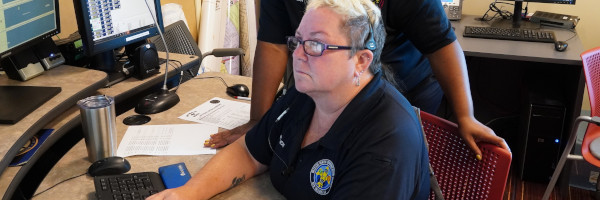Video Chat for Emergency Medical Calls to 9-1-1
Jump to navigation
Jump to search
| Video Chat for Emergency Medical Calls to 9-1-1 | |
|---|---|

| |
 Dispatcher | |
| Team Organizations | Wireless |
| Team Leaders | Bill Schrier |
| City, State | |
| Contributors | |
| Website | |
| Document | |
Description
One of the most dangerous tasks for healthcare providers and first responders is coming into contact with people who show symptoms but may not have the pandemic disease or others who have the virus but do not show symptoms. Several companies make software to allow first responders and healthcare providers to conduct quick and secure video conferences with 9-1-1 callers and those showing symptoms. The 9-1-1 telecommunicator or responder/provider texts a link to the caller/patient’s smartphone. The patient clicks on the link to establish the secure video call. When the call ends the link also expires. No app is required by the patient to make the call.
Challenges
- First Responders must minimize their exposure to infectious diseases when responding to 9-1-1 calls for emergency medical assistance.
- First Responders and 9-1-1 callers need face-to-face interaction to help determine the true extent of an illness.
- 9-1-1 call centers (Public Safety Access Points or PSAPs) do not have standardized methods for receiving data such as video or physiological measurement (temperature, blood pressure) from emergency callers.
- All PSAPs operate via Computer-Aided Dispatch (CAD) systems, which tie into the Public Switched Telephone System (PSTN) to receive emergency caller information such as physical addresses. PSAP CAD systems are evolving to support Next Generation 911 (NG9-1-1) features such as support for receiving text messages. There is some movement toward app-based 9-1-1 solutions, such as RapidSOS (https://rapidsos.com/) but as of early 2020 there is no standard for 9-1-1 in mobile operating systems.
Implementation
- Public safety agencies acquire an application which provides the video chat capability and train telecommunicators and first responders to use it.
- New Orleans Parish Communication District uses such a tool to triage 9-1-1 calls before physically meeting the 9-1-1 callers.
- Camden County NJ Public Safety implemented such a tool.